 We cooperate with the group of Prof. Roger Fuoco Department of Chemistry and Industrial Chemistry, University of Pisa, Italy |
|
|
I. Degano Oxidation mechanism of drugs - new psychoactive substances, medicaments, bioactive compounds in respect to their chemical structure is determined. Spectroelectrochemical investigation of compounds and determination of their reduction and oxidation mechanism. |
publications 2017-2024 |
|
I. Degano, M. P. Colombini, The study concerns the analysis of degradation processes of flavonoid dyes used in old tapestries dyeing. This problematic has importance for saving of the Cultural Heritage. The clarification of degradation products of dyes isolated from plants (brazilwood, logwood) can allow the identification of dye source and find information for the best conservation of the tapestries. Oxidation mechanism of bioactive flavonoid compounds in respect to their chemical structure is determined. |
publications 2009-2018 |
|
S. Giannarelli, M. P. Colombini, N. Fanelli, R. Fuoco Electrochemistry of compounds important in environment and their interfacial properties has been subject of our research for many years. Electrochemical properties of triazine herbicides and dicarboximide-type pesticides were studied. Detailed electrochemical study of inclusion complexes of these compounds with cyclodextrins. Complicated reduction mechanism of carboxyimid-type pesticide vinclozoline with beta-cyclodextrin was supposed. It was found that the reduction mechanisms of triazine derivatives and also vinclozoline are influenced by formation of inclusion complex. The role of cavity of host differs in both cases significantly. |
publications 1995-2001 |
|
S. Giannarelli, R. Fuoco 1/ Electrochemistry of compounds important in environment such as phenylether herbicides and hydroxybenzonitrile herbicides. Mechanism of reductive degradation of herbicides was investigated, self-protonation was shown to play an important role in the mechanism. 2/ The electron transfer properties of drugs. 3/ Degradation of organic UV filters as pseudo-persistent environmental contaminants. UV filters were inspected by electrochemical techniques (cyclic voltammetry, spectroelectrochemistry and electrolysis), photolysis and photoinduced transformation with peroxide. |
publications 2005-2010 2014-2016 |
|
S. Giannarelli, R. Fuoco Electrochemistry of important auxins responsible for cell elongation and roots initiation and cytokinins acting in cell division is subject of our cooperation. These phyto-hormones play a key role in the control of the overall stress response in plants. |
publications 2010-2011 |
 We cooperate with Dr. Jacek Nycz Institute of Chemistry, University of Silesia, Katowice, Poland |
|
The research deals with the effects of pyrrolidine, phenothiazine, carbazole redox active substituents on the reduction and oxidation mechanisms of 1,10-phenanthrolines. Oxidation mechanism of bioactive styrylquinoline carboxylic acids in respect to their chemical structure is determined. The investigation of oxidation properties of a quinoline unit in the bioactive compound and the redox properties of azoquinoline dyes is involved. |
publications 2014-2024 |
 We cooperate with Prof. Andreas Tzakos University of Ioanina, Ioanina, Greece |
|
Redox mechanism of new bioactive compounds, their bioactive, antioxidant effects in respect to their chemical structure is determined. |
publications 2018-2024 |
 We cooperate with Prof. Lenka Skalova, Doc. Iva Bousova Faculty of Pharmacy in Hradec Kralove, Charles University, |
 |
The research deals with oxidation and reduction mechanism of bioactive compounds, drugs, terpenes and bioflavonoids. |
publications |
 We cooperate with Dr. Emanuela Pitzalis Institute of Chemistry of Organometallic Compounds, CNR Pisa, Italy |
|
Oxidation mechanism of bioactive flavonoid compounds and polyphenolic drugs in respect to their chemical structure is determined. The oxidation products are identified by GC-MS analysis. |
publications 2015-2016 |
 We cooperate with Doc. Miroslav Gal Faculty of Chemical and Food Technology, Slovak University of Technology in Bratislava, Slovakia |
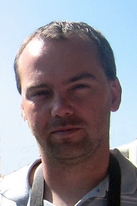 |
1/ The research deals with oxidation and reduction mechanism of bioactive compounds and drugs and complexation properties of potential MR imaging ligands. 2/ The other part of cooperation involves the interaction of proteins with lipids. |
publications 2011-2016 2011-2024 |
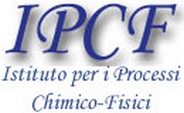 We cooperate with Prof. Nicolangelo Fanelli Istituto per I Processi Chimico-Fisici, CNR Pisa, Italy |
|
Our electrochemical impedance study was focused on adsorption and surface interactions of s-triazine-type pesticides, which are important parameters for environmental pollution. We have found that even a small difference in the chemical structure of bioactive molecule may cause significant differences in the accumulation properties at heterogeneous interfaces. Film phase transitions are characterized by a critical transient temperature Tc above which a condensed phase cannot be formed. The critical temperatures of the surface phase transition of monomolecular films from fluid-like form to condensed form at given concentration were estimated. The remarkable difference of these values is one of the reasons why these two herbicides comport so differently at contamination of natural heterogeneous systems. The results correspond to agronomic observations that terbutylazine is adsorbed better at upper surface layers than atrazine. Terbutylazine is therefore decomposed faster and does not contaminate water sources. We suggest that estimation of the critical temperature of the surface phase transition obtained from EIS enables prediction of accumulation properties of pesticides at natural interfaces. |
publications 2000-2016 |
 We cooperate with Dr. Gabor Meszaros, Prof. Tamas Pajkossy Institute of Materials and Environmental Chemistry Chemical Research Center Hungarian Academy of Sciences, Budapest |
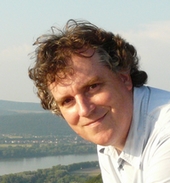 |
|
G. Meszaros The study deals with the different modes of anchoring and self-organization of the electron conducting organic molecules containing heterocyclic rings at the metallic substrates. Our cooperation involves the measurement of fast current transients that start in the mA range (metallic contact) and end up in the low pA range corresponding to the electric cunductance of individual molecules. |
publications 2010-2019 |
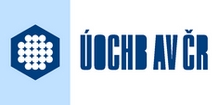 We cooperate with Dr. Jan Tarabek Institute of Organic Chemistry and Biochemistry Prague |
|
Electron transfer mechanisms of organic compounds, the formation of radicals and in situ EPR spectroelectrochemistry. |
publications 2013-2016 |
 We cooperate with Doc. Jan Vacek Faculty of Medicine and Dentistry Palacky University in Olomouc  We cooperate with Prof. Vladimir Kren Institute of Microbiology Prague |
|
The research consists in the investigation of oxidation properties of flavonolignan derivatives as silybin, dehydrosilybin and silychristin in order to explain their oxidation properties in variable solutions. |
publications 2013-2016 |
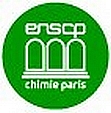 We cooperate with Dr. Michele Salmain Laboratoire de Chimie et biochimie des complexes moleculaires, UMR C.N.R.S. 7576 Ecole nationale superieure de chimie de Paris, France |
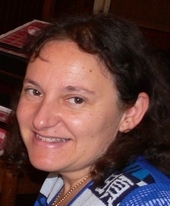 |
|
Dr. M. Salmain, Prof. Gerard Jaouen Our study involved the complicated reduction mechanism of two organometallic compounds cymantrene and its ring substituted derivative cymantrenyl methyl imidate, which we had chosen for labelling of bioorganic macromolecules (BSA). One-electron reduction yields very unstable 19-electron intermediate which undergoes further chemical reactions. Comparison of the data obtained under atmosphere of argon and carbon monoxide led to the conclusion that a substitution of ligand CO takes part in reaction. The electrochemical method for detection of proteins labelled by redox active organometallic compound is important for immunoassay analysis. |
publications 1999-2003 |
 We cooperate with Dr. Michal Valasek Karlsruhe Institute of Technology, Institute of Nanotechnology Eggenstein-Leopoldshafen, Germany |
|
1/ Electron transfer in molecules important in the molecular electronics. 2/ Oxidation and reduction mechanism of bioactive compounds and their metabolites. |
publications 2010-2016 2014-2016 |
 We cooperated with Dr. Michal Valasek Institute of Organic Chemistry and Biochemistry Prague |
|
1/ Electrochemistry of compounds important in environment such as hydroxybenzonitrile herbicides. 2/ Electrochemistry of flavonoid compounds. |
publications 2008-2011 |